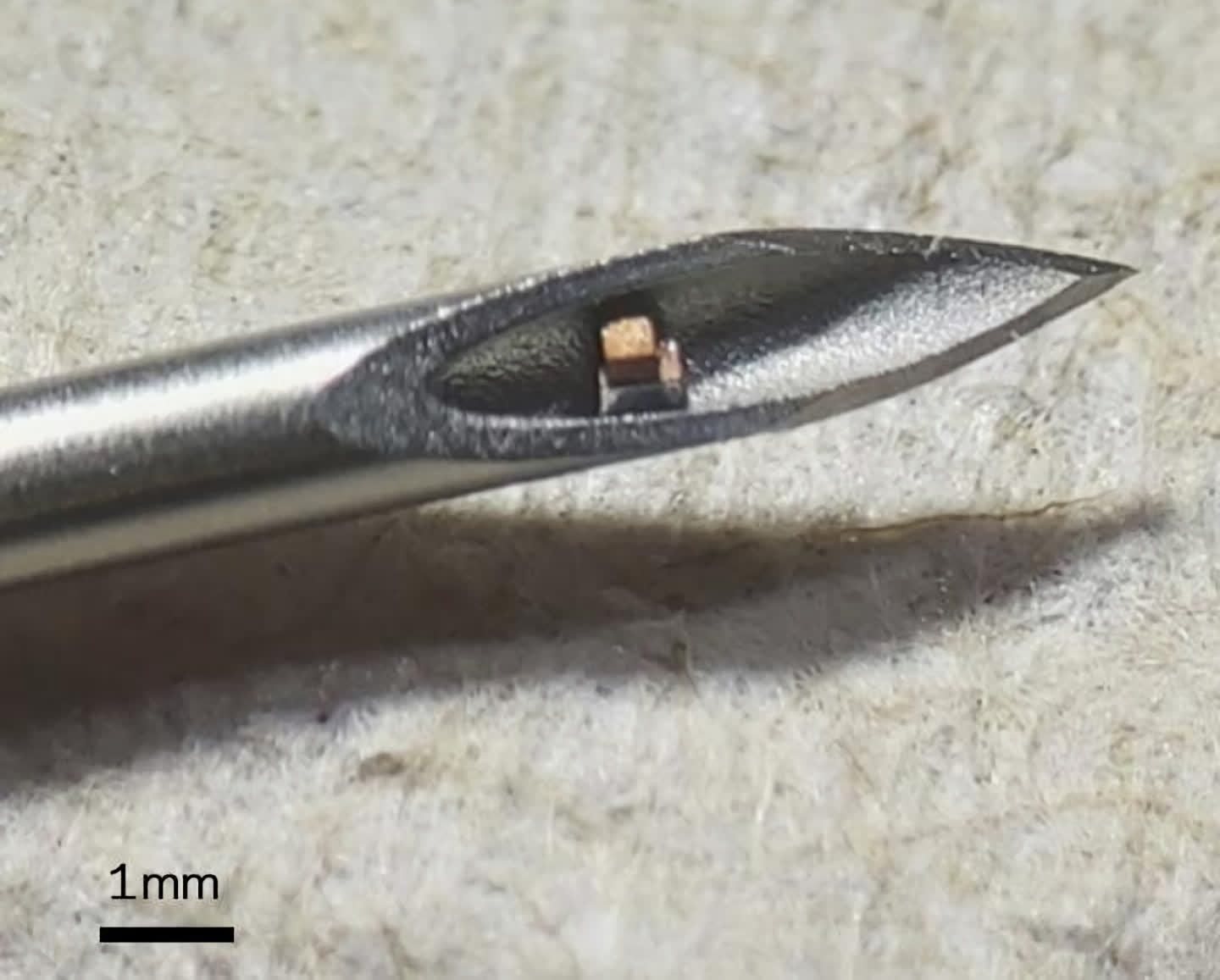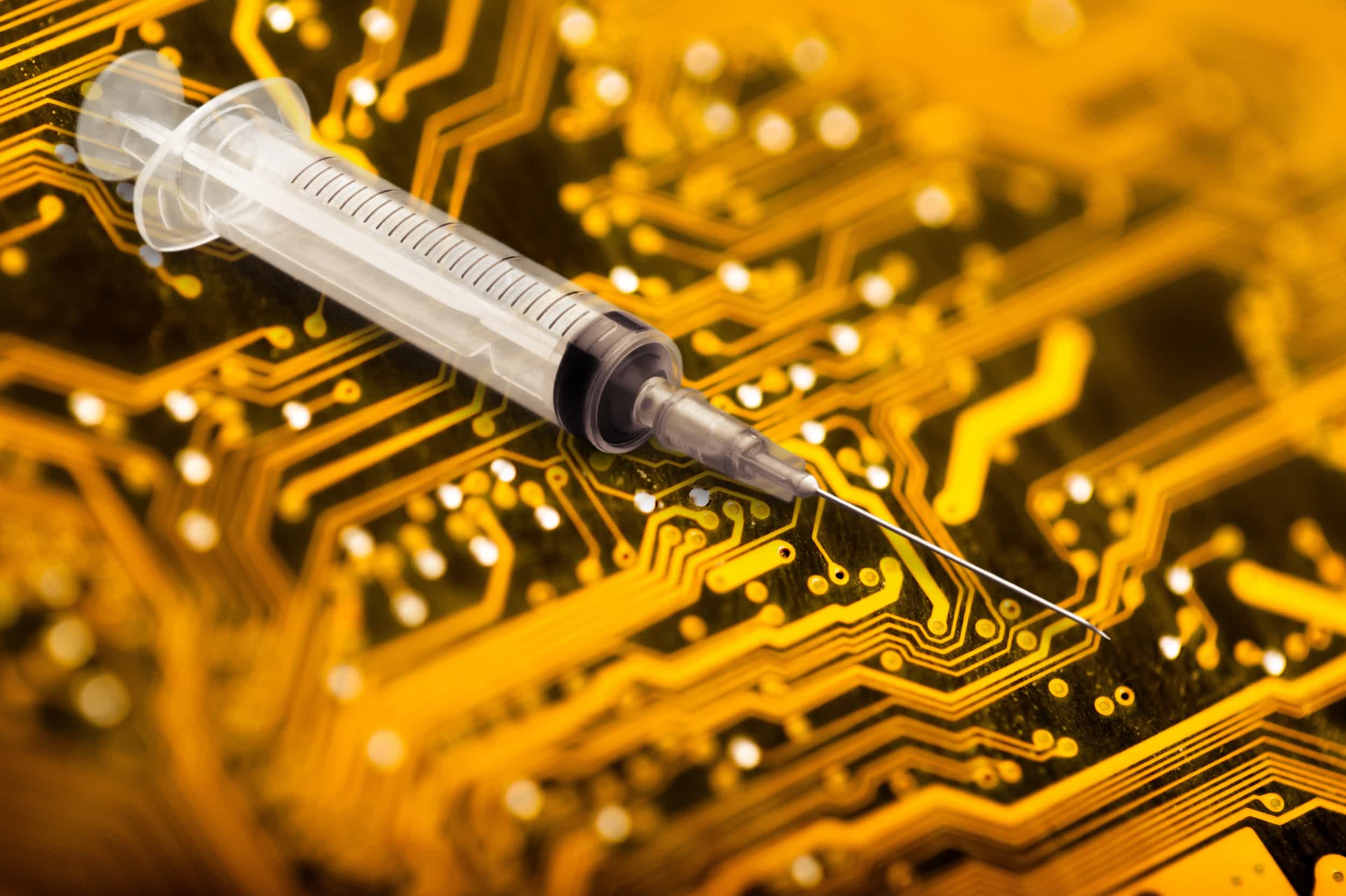The big picture: The goal is to inject chips into the human body using a hypodermic needle and communicate with it using ultrasound. At present, the prototype is able to measure body temperature, although future revisions could monitor metrics like blood pressure, respiration and glucose.
Researchers at Columbia University's School of Engineering and Applied Science have developed the world's smallest single-chip system that is a complete functioning electronic circuit.
The implantable chip, fabricated by TSMC, is as small as a dust mite and can only be viewed under a microscope. It consumes a total volume of less than 0.1 cubic millimeters and rather than using traditional RF communications links, the team is relying on ultrasound to power and communicate with it wirelessly.

As EurekaAlert highlights, traditional implanted electronics up to this point have been highly inefficient in terms of volume, often requiring multiple chips, packaging, wires and external transducers. Many also use batteries for energy storage.
Ken Shepard, the study's leader, said they wanted to see how far they could push the limits on how small a functioning chip they could make. "This is a new idea of 'chip as system'--this is a chip that alone, with nothing else, is a complete functioning electronic system," Shepard added.
Image credit: Billion photos, Chen Shi Columbia Engineering
